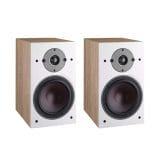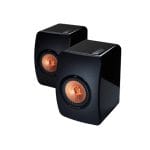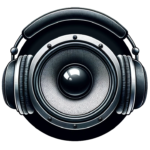In-Depth Comparison: Dali Oberon 3 vs. KEF LS50
Having spent years immersed in the world of high-fidelity audio, I’ve auditioned and reviewed numerous speakers across a broad spectrum of brands and price points. Among my favorites to compare are the Dali Oberon 3 and the KEF LS50. Both of these bookshelf speakers have amassed a dedicated following, thanks to their remarkable sound quality, impressive build, and distinct characteristics. Here, I’ll dive into a comprehensive comparison to help potential buyers determine which of these two stellar options aligns with their preferences and needs.
Design and Build Quality
One of the first things to catch your eye with any speaker is its design, and both the Dali Oberon 3 and the KEF LS50 do not disappoint. The Dali Oberon 3 flaunts a white satin finish with seamless corners that scream elegance and fit comfortably in any modern décor. In contrast, the KEF LS50 garners attention with its unique UniQ driver design and immaculate craftsmanship. Although its limited color palette might not appeal to everyone, the LS50s remain stylish and compact, perfect for smaller spaces.
Sound Quality
When we pivot to sound quality, both speakers reveal their true potential. The Dali Oberon 3 offers a rich and balanced sound with a slightly forward presentation. The soundstage is broad, and the imaging is precise, making these speakers an excellent choice for a variety of music genres. The 7-inch bass driver adds depth and a substantial presence to the sound, punching way above its weight in terms of bass response. However, be prepared for some boxy undertones and slightly rolled-off highs.
The KEF LS50, on the other hand, is known for its stellar treble detail and midrange clarity. The sound is agile, dynamic, and accurate, delivering an unmasking veil of sound. The UniQ driver technology contributes to its precise soundstage and imaging, offering remarkable transparency. While its bass is not as robust as the Oberon 3, the LS50 compensates with its tonal accuracy and musicality. It’s worth noting that these speakers can reveal the vulnerabilities in your audio chain, so a quality setup is crucial.
Performance and Versatility
When it comes to versatility, the Dali Oberon 3 shines with its ease of placement. These speakers can adapt to various room sizes and setups, delivering excellent off-axis performance without losing their charm. Whether facing forward or slightly toed-in, they offer an immersive experience that makes them forgiving and less finicky about positioning.
The KEF LS50 demands a bit more attention to placement to fully appreciate its capabilities. Experimenting with toe-in and the distance from walls can significantly impact the soundstage and imaging. Once dialed in, they reward the listener with a precise and engaging sound that feels intimate and accurate, making the effort worthwhile.
Value for Money
Value for money is always a consideration, especially when investing in high-fidelity audio equipment. The Dali Oberon 3 shines brightly in this category, offering a sound quality that rivals more expensive models without breaking the bank. Its performance, combined with its elegant design, makes it a favorite among budget-conscious audiophiles.
The KEF LS50, while not as budget-friendly as the Oberon 3, delivers a performance that justifies its cost. The speakers exhibit a level of transparency and detail typically found in higher-priced models, making them a fantastic investment for those who appreciate fine audio.
Downsides to Consider
While both speakers are exceptional, they do come with their own set of downsides. The Dali Oberon 3 can be a bit sharp with poor recordings and requires some care in setting up the EQ and placement for the best soundstage. Moreover, its high-end might feel rolled off to some listeners.
The KEF LS50’s primary downsides include a lack of support for bi-wiring and a somewhat limited finish variant. Additionally, those who crave substantial bass might find it necessary to complement these speakers with a subwoofer for that extra kick.
Final Thoughts
Deciding between the Dali Oberon 3 and the KEF LS50 boils down to personal preferences and room setups. The Oberon 3 is an excellent choice for those seeking a balanced and dynamic sound with ease of placement and a budget-friendly price tag. On the other hand, if you are after precise soundstage and meticulous detail with a bit more focus on the highs and midrange, the KEF LS50 might be your best bet.
Comparing Aspects
User-Based Scores & Our Experts Analysis
KEF LS50
Dali Oberon 3
The KEF LS50, however, has a more controlled and accurate bass response. While it may not extend as deep as the Oberon 3, it provides a tight, precise low end suitable for most music genres except those heavily reliant on bass. The LS50’s bass is more about quality and accuracy rather than quantity. This can be particularly appealing for those who prefer a cleaner and more accurate representation of their music. Aspect Verdict: If you prioritize a richer and more prominent bass, the Dali Oberon 3 has a clear edge with its larger driver and weightier low-end performance. However, for those who value accuracy and control in the bass frequencies, the KEF LS50 offers a more refined low-end experience suitable for a wide range of music.
In contrast, the Dali Oberon 3’s treble detail is of high quality but might feel a touch rolled off. This can be beneficial for reducing listening fatigue over long sessions and can lend a warmer overall sound. However, some users may find the highs slightly subdued compared to the LS50, particularly with detailed recordings. Aspect Verdict: The KEF LS50 takes the lead in treble detail, making it an excellent choice for those who crave clarity and precision in the high end. The Dali Oberon 3, while still commendable in treble performance, leans towards a warmer sound that might not reveal as much detail but offers a smoother listening experience.
The Dali Oberon 3 also offers an impressive midrange performance, rendering vocals and midrange instruments with vibrancy and precision. However, there are moments when certain vocal registers might present slight boxy undertones. With a good room setup and careful positioning, these anomalies can often be mitigated, allowing the midrange to shine brightly. Aspect Verdict: In terms of midrange clarity, the KEF LS50 edges out with a slightly more refined and intimate presentation. The Dali Oberon 3 is still excellent, especially considering its price range, but may require more effort in setup to achieve the optimal midrange performance.
The KEF LS50 also impresses with its solid build and sleek aesthetics. The small, compact form is enhanced by the unique UniQ driver, and while the color and finish variants are limited, the overall look is sophisticated and refined. The LS50s are compact yet exude a luxury feel that’s hard to overlook. Aspect Verdict: Both speakers offer outstanding design and build quality. The choice comes down to personal preference in aesthetics. If you prefer a more elegant, seamless design, the Dali Oberon 3 is your pick. If a compact, solidly built speaker with a unique driver design appeals to you, the KEF LS50 takes the cake.
The KEF LS50 offers a different but equally engaging sound quality. Its combination of playful musicality and sharp precision brings out the best in various music styles. The transparency and openness of the LS50’s soundstage reveal every detail within a track, making for an immersive listening experience. Aspect Verdict: Both speakers provide stellar sound quality but cater to different preferences. The Dali Oberon 3 is perfect for those who enjoy a rich, warm sound with a wide soundstage. The KEF LS50 caters to those who appreciate meticulous detail and transparency with a more precise and engaging sound signature.
The KEF LS50, while more expensive, justifies its cost with superior build quality, exceptional sound detail, and transparency. It offers a performance level typically found in more high-end models, making it a worthwhile investment for those who demand the best from their audio equipment. Aspect Verdict: In terms of sheer value, the Dali Oberon 3 edges out for budget-friendly buyers seeking high performance at a reasonable price. However, for those willing to invest a bit more for superior detail and build quality, the KEF LS50 represents excellent value for money.
Final Verdict
In summary, the Dali Oberon 3 and KEF LS50 cater to different audiophile preferences and needs. The Dali Oberon 3 offers a balanced, dynamic sound with a significant bass presence, forgiving setup, and elegant design, making it a fantastic, budget-friendly option. The KEF LS50 delivers unmatched treble detail, midrange clarity, and precise soundstage, providing a transparent and immersive audio experience, albeit at a higher price. Both speakers provide excellent value for their respective costs, making them pivotal contenders in the bookshelf speaker category. Ultimately, the choice between them hinges on whether you prioritize ease of setup and a fuller bass (Oberon 3) or detail and precision (LS50).
Comparison and Difference Between
Use dropdown menus to compare different models.
| Compare Speakers |
Brand and Model Specifications
Information about the brand, model release date.
| Manufacturer | Dali Speakers | KEF |
| Model | Oberon 3 | LS50 |
| Photo |  |
 |
| Release Date | 2018 | 2013 |
| HifiSpecs Rating | ||
| Amazon Rating | ||
| Price |
Technical Specs
Technical characteristics of the speakers.
| Amplification Type | Passive | Passive |
| Crossover Type | 2-Way | 2-Way |
| Enclosure type | Bass Reflex | Bass Reflex |
| Frequency Range (+/-3 dB)[Hz] | 47 - 26000 | 79 - 28000 |
| Frequency Range (-6dB)[Hz] | - | 47 - 45000 |
| Maximum SPL [dB] | 108 | - |
| Sensitivity (2,83 V/1 m)[dB] | 87 | 85 |
| Nominal Impedance (Ohms) | 6 | 8 |
| THD (Total Harmonic Distortion) | - | - |
| Recommended Amplifier Power [W] | 25-150 | 25-100 |
| Crossover Frequency [Hz] | 2400 | 2200 |
| Bass Reflex Tuning Frequency [Hz] | 49 | - |
| Driver Units | Tweeter: 1 x 29 mm soft dome |
Tweeter: Uni-Q driver array with 1″ (25mm) vented aluminum-dome tweeter |
| Connectivity | Wired | Wired |
| Inputs | Single Wire | Single Wire |
| Outputs | - | - |
| Magnetic Shielding | No | No |
Placements and Distances
Where and how to put them.
| Form Factor | Shelf, Stand | Shelf, Stand |
| Distance from Wall [cm] | 5 -50 | 15 |
Dimensions and Weight
Physical characteristics of the speakers (without stands).
| Length | ~7.8 in ~198.12 mm ~19.81 cm |
~7.9 in ~200.66 mm ~20.07 cm |
| Width | ~12.3 in ~312.42 mm ~31.24 cm |
~10.9 in ~276.86 mm ~27.69 cm |
| Height | ~13.7 in ~347.98 mm ~34.8 cm |
~11.9 in ~302.26 mm ~30.23 cm |
| Weight (Single Speaker) | ~13.9 lb ~6304.93 g ~6.3 kg |
~15.8 lb ~7166.76 g ~7.17 kg |
| Shipping Weight | ~32.3 lb ~14651.03 g ~14.65 kg |
~40.4 lb ~18325.13 g ~18.33 kg |
Colors and Accessories
List of available colors and optional accessories.
| Colors |
|
|
| Accessories | Rubber feet, |
– |
| Detachable Grilles | Yes | No |
Price and Warranty
Satisfaction is (not) guaranteed.
| Warranty | 3 Years | 5 Years |
| Amazon Price |
Review Comparison
Hifispecs' professional customer-reviews can help make up your mind.
| Available Reviews |
Disclaimers
Small print and stuff...
The data and facts on this website are provided on "as is, as available basis" without warranty of any kind. HiFiSpecs.com is not responsible for any errors and possible mistakes in the information it publishes. Double check all the information directly on the manufacturer sites.
HiFiSpecs.org is a participant in the Amazon Services LLC Associates Program, an affiliate advertising program designed to provide a means for sites to earn advertising fees by advertising and linking to amazon.com, amazonsupply.com, or myhabit.com.
We do not endorse any product or service for money.

